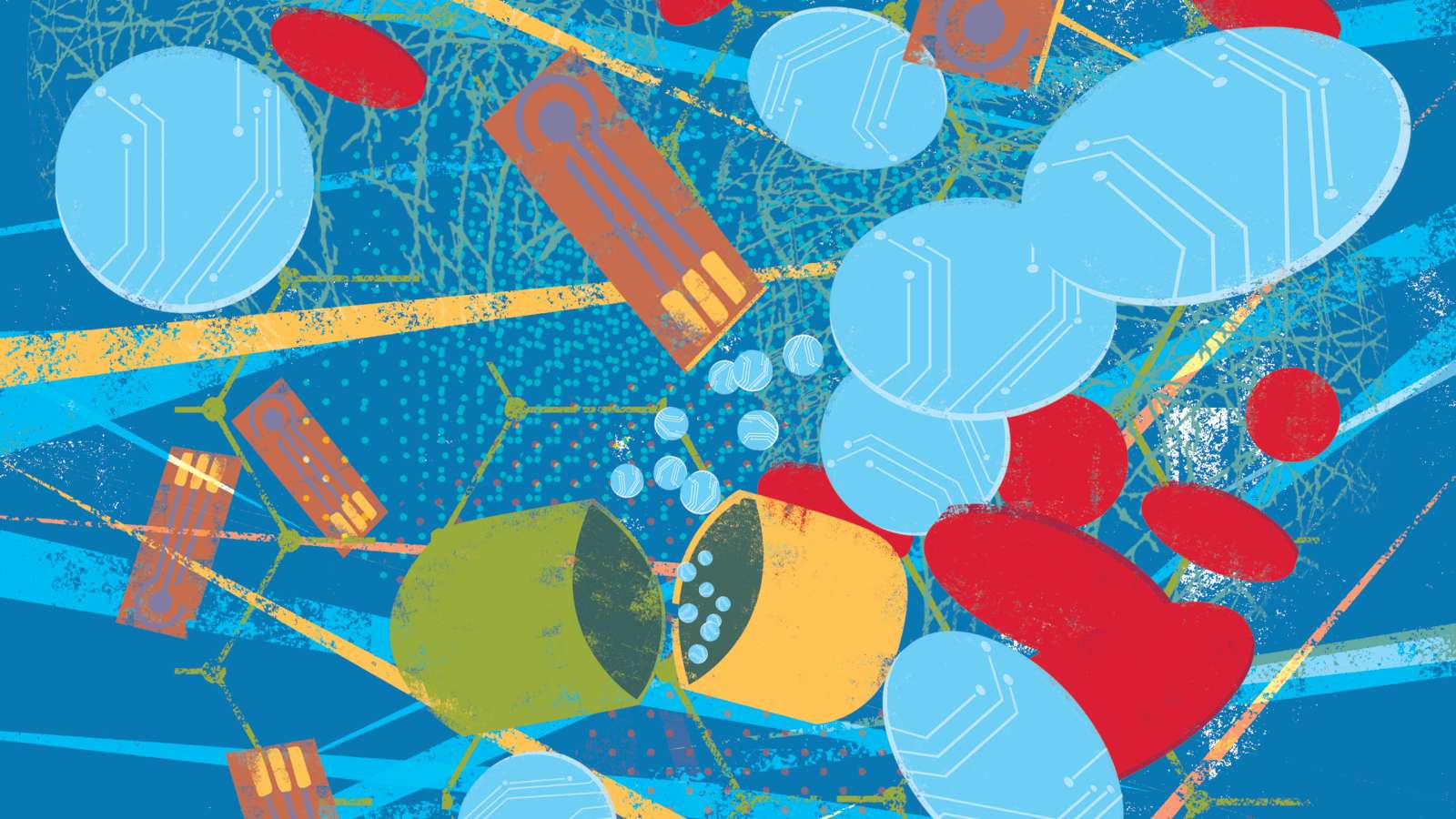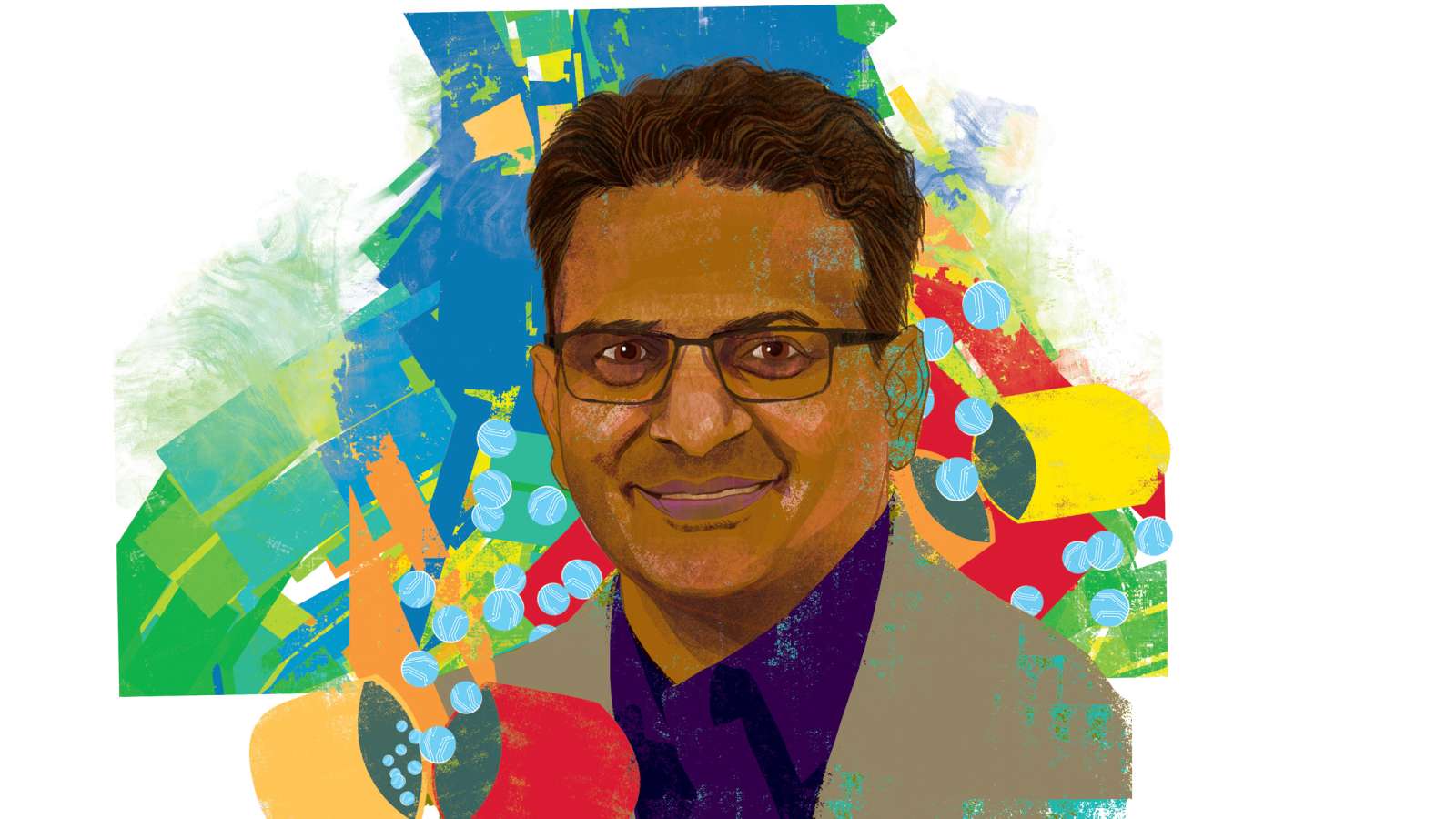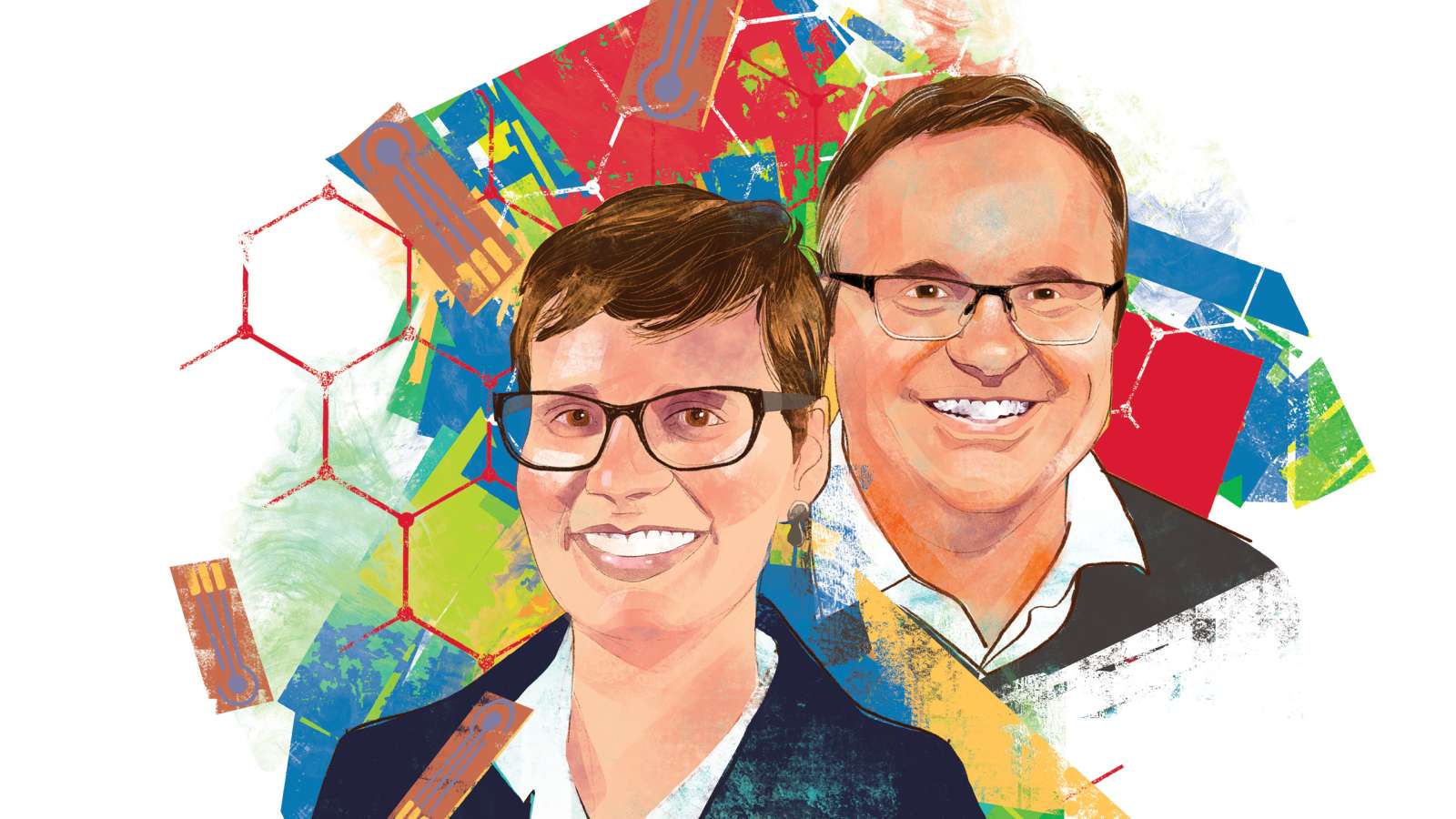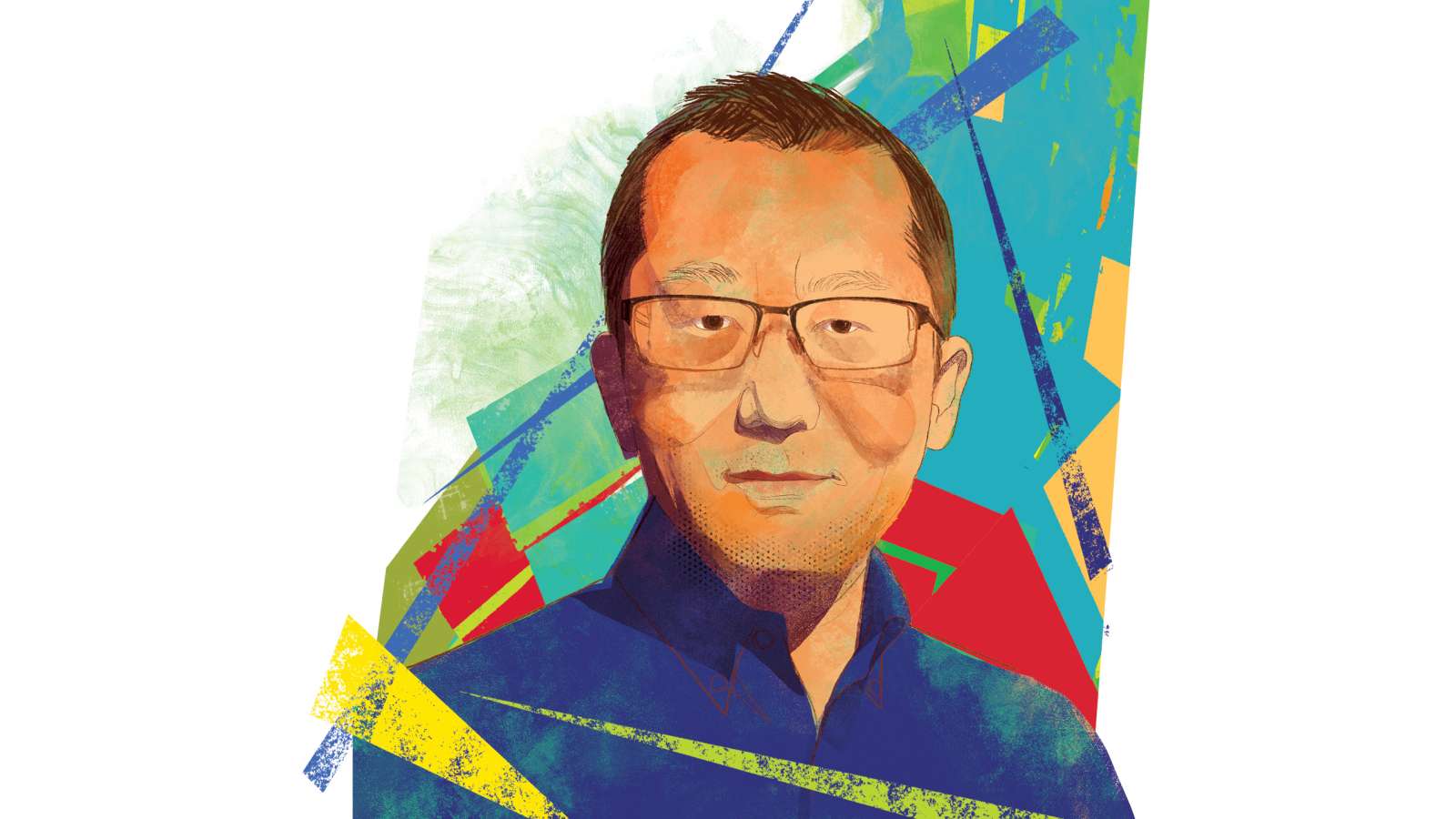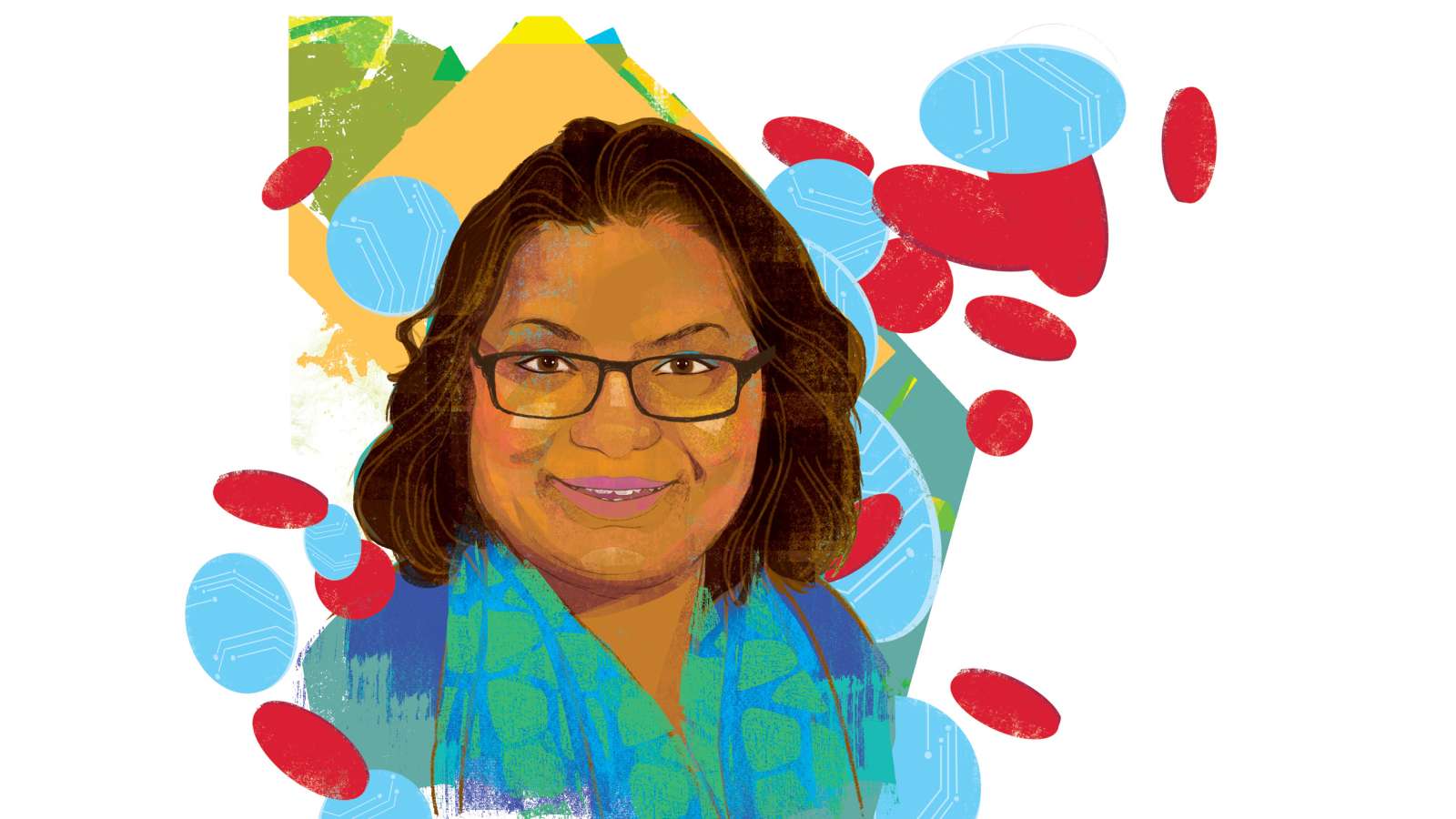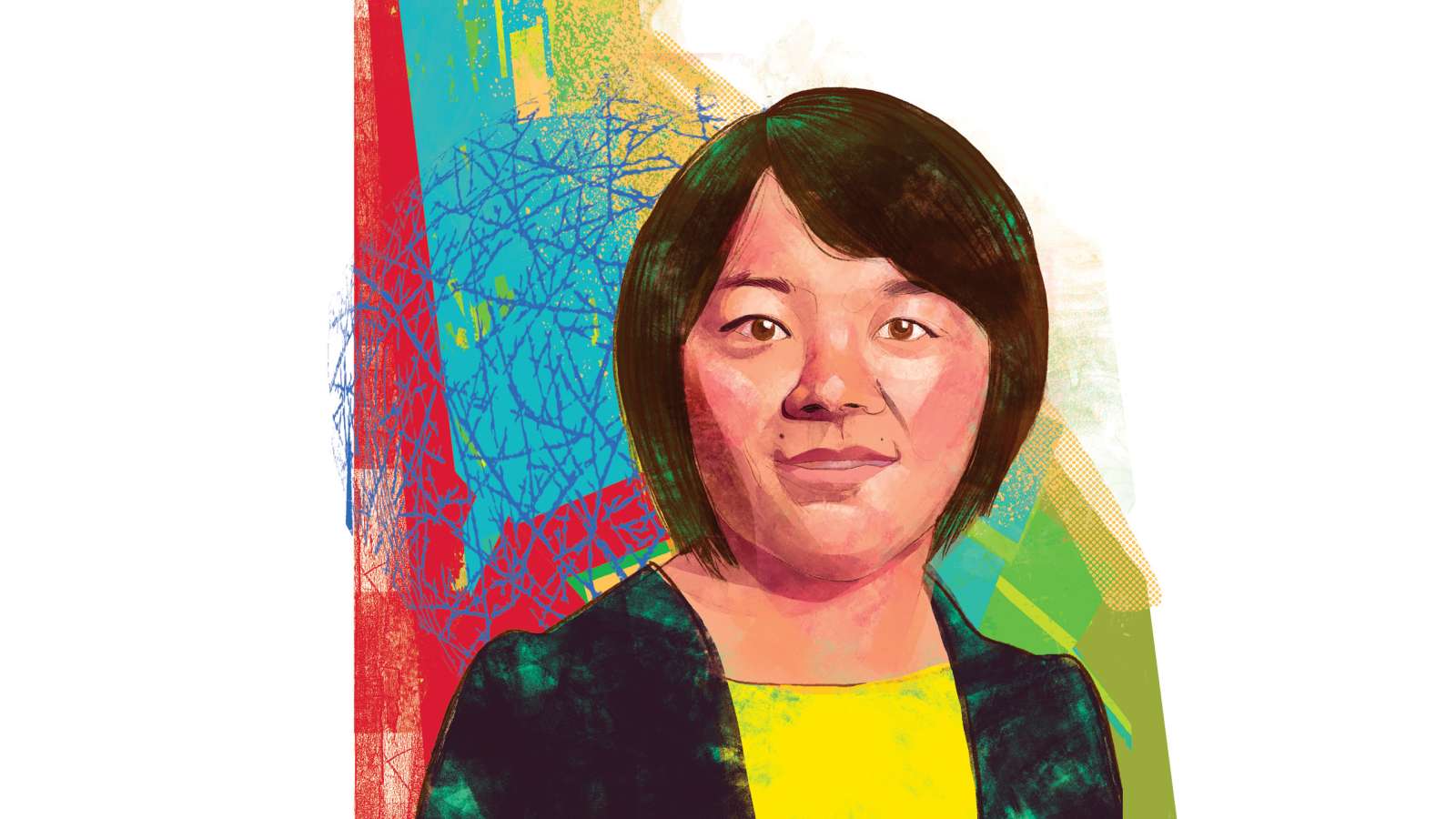Breaking Barriers With Nanocarriers
When she fires up her computer to report her latest research findings, Rizia Bardhan can look to the right for a fifth-floor view of the campus horse barns. Look left, and there on the bookshelf is a framed photo of the family’s three dogs: Nano, Fermi, and Bubbles.
(Nano, for Bardhan’s science. Fermi, after Enrico Fermi, winner of the 1938 Nobel Prize in Physics and namesake of nanomaterials’ “Fermi” energy level. Bubbles, as named by her two young sons.)
Bardhan is an associate professor of chemical and biological engineering who’s also affiliated with the Nanovaccine Institute based at Iowa State. She studies nanostructures with special properties that can be switched on with light, heat, or other stimuli. Those properties can be useful in bioimaging or in treatments for cancers, neurodegenerative disorders, and other diseases.
Visit Bardhan’s Nanophotonics and Nanomedicine Lab, also on the fifth-floor of the Advanced Teaching and Research Building, and you get a short course on the body’s blood-brain barrier.
Bardhan and a team of researchers recently won a grant from the National Science Foundation to develop nanocarriers – they’re no more than 100 billionths of a meter in diameter – that can transport drugs across the barrier and into the brain for treatment of Alzheimer’s disease, epilepsy, and other disorders.
The body makes that very hard to do. The blood-brain barrier is all about keeping bacteria, toxins, pathogens – all the bad stuff – out of the brain. So how do you get medicines across the barrier and into brain cells?
The idea Bardhan and her collaborators are working on involves developing hybrid, soft/hard nanocarriers small enough to cross the barrier and big enough to be filled with brain medicines. There is a soft, fat-like, liposome interior (which is already a clinically approved drug carrier) surrounded by a hard shell of gold nanoparticles.
“If it’s too soft, it will get stuck in cell membrane,” Bardhan says. “If it’s too hard, some immune cells will uptake the nanoparticle and clear it out of the cell.”
This hybrid way, Bardhan says, “provides a broad range of mechanical properties to achieve high cellular intake.”
Faculty, students, and research scientists work in the neighboring laboratories of the Advanced Teaching and Research Building. The Nanovaccine Institute took over the floor in late 2020 and it didn’t take long for counters, shelves, and workspaces to fill with instruments, supplies, lab notebooks, and people.
The $7 million project was made possible with university and donor support, including major gifts from alumni Jim Balloun (’60 industrial engineering), Mike (’59 chemical engineering) and the late Jean Steffenson, and Bob Lane (’68 chemical engineering).
Bardhan has filled her part of the floor with precision instruments such as a spectrophotometer and Raman microscopes. The team running the instruments and gathering the data include a research scientist, a postdoctoral research associate, and four doctoral students.
Just around the corner, her office swells with dozens of the healthiest plants you’ll ever see, and more dog pictures including 10-year-old Nano, a little Cavalier King Charles Spaniel.
“Good things come in small packages, just like nanoparticles,” she says.
